What If We’re the Amnesia?
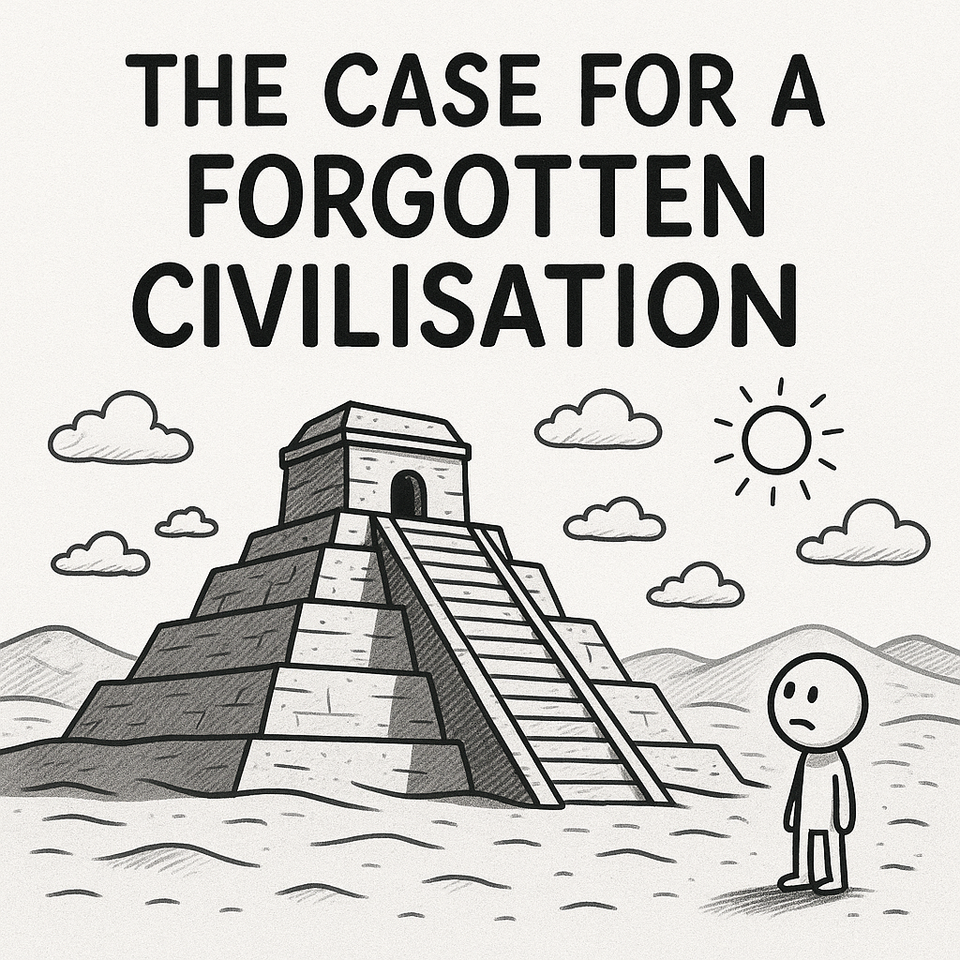
Part 1: The Sahara Was Green and Other Weird Thing
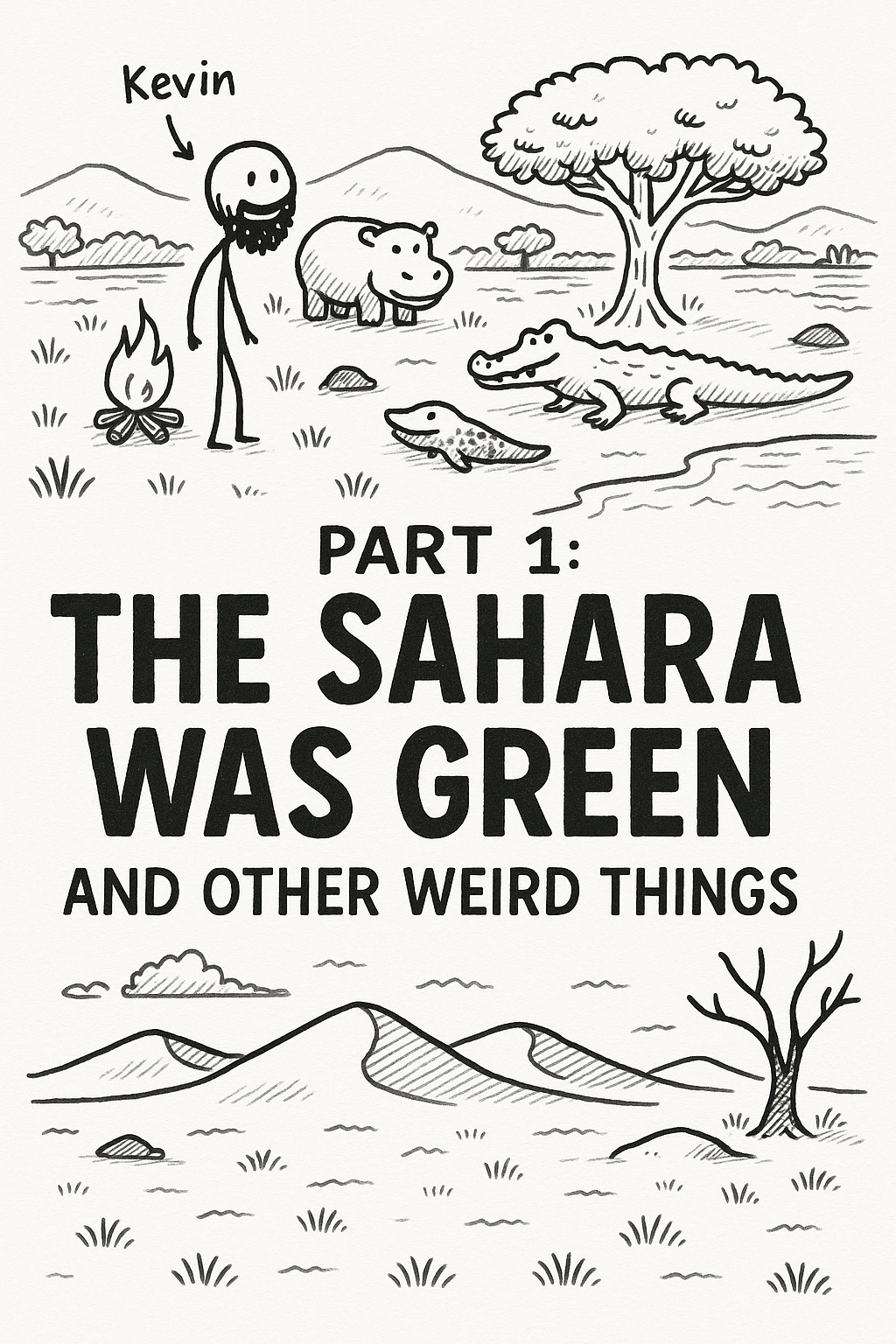
Let’s talk about something no one ever bothered to tell us in school:
The Sahara Desert used to be green.
Not just “slightly less dusty” — we’re talking full-on lush, thriving, hippo-infested savannah.
There were rivers. Trees. Grass. Giant lakes. Crocodiles. Fishing villages. Campfires. Probably a guy named Kevin with an excellent beard.
This was about 6,000 to 9,000 years ago — not millions, not dinosaurs — this was post-agriculture, pre-Spotify.
And then... it just stopped.
Scientists call it the “African Humid Period,” which is a deeply underwhelming name for what was basically the Sahara going from “Jurassic Park” to “Death Valley” in geological fast-forward. Rainfall patterns shifted, monsoons retreated, and the entire region dried out and died.
Now it’s 3.6 million square miles of nope.
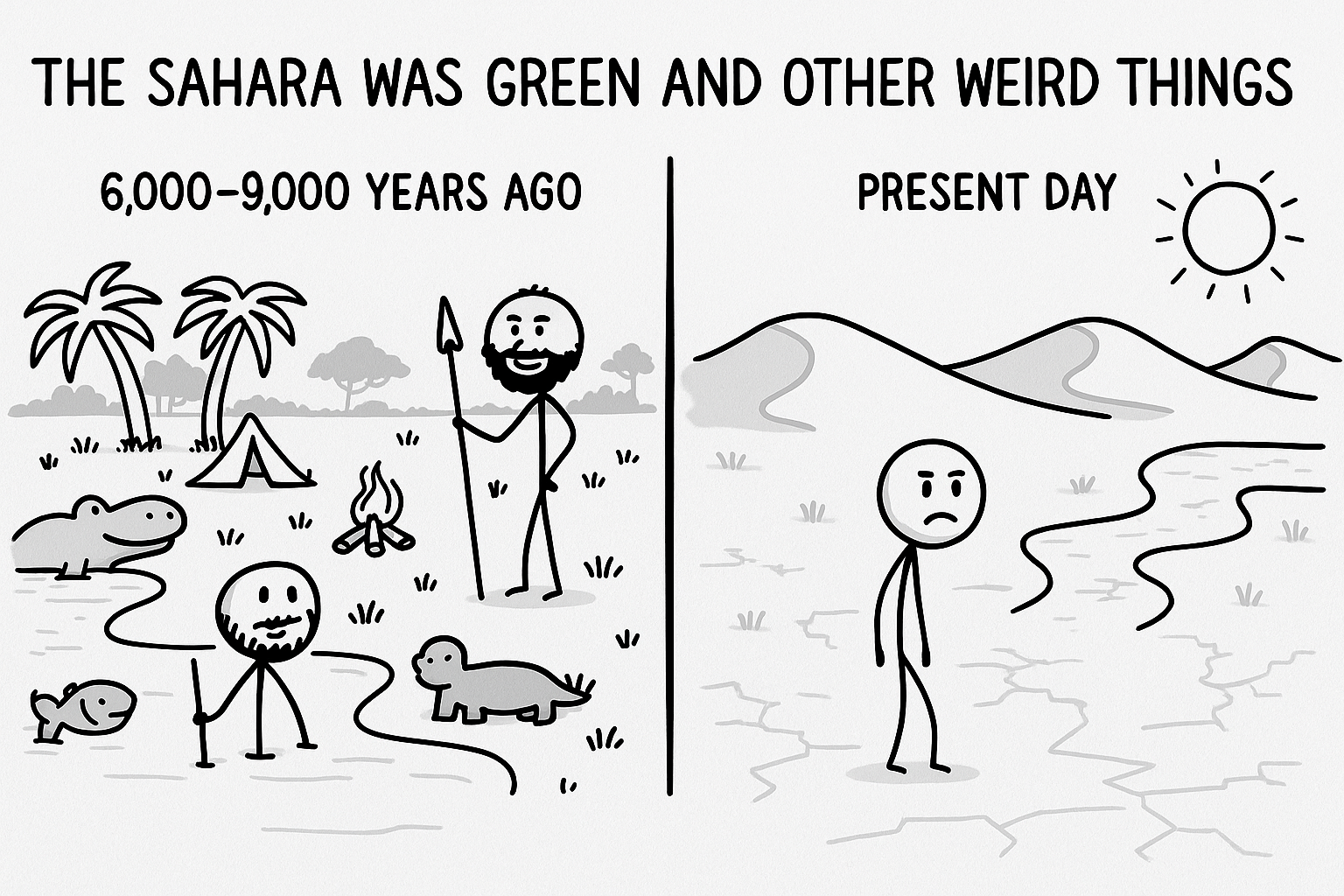
And sure, climates shift — but this was catastrophic.
And rapid.
And... weirdly not discussed much?
And here’s where it gets conspiratorial — because you know what cultures were hanging around right before that massive desertification?
All the ones we think of as the “firsts.”
The first cities. The first temples. The first signs of “civilisation.”
Right on the fringes of this now-dead zone.
Mesopotamia. Egypt. The Nubian corridor.
Places that didn’t start things — they survived them.
So here’s a thought:
What if those weren’t the beginnings of civilisation?
What if they were the holdouts?
Like refugees clinging to the last oasis while everything else got swallowed in sand.
And what if the real centre — the heart of a big, weird, intelligent, possibly very smug ancient civilisation —
was under the desert?
And we just haven’t dug deep enough.
Or worse — we have,
but we called it “a pile of rocks,” wrote a paper about it, and moved on.
Let me paint the image:
You’re living in a green Sahara.
You’ve got domesticated animals, tools, maybe early books made from giraffe skin.
You build. You plant. You pass things down.
Then — boom. Drought. Collapse. Wind. Sand.
Everything gets swallowed.
Your kids flee.
They end up in the Nile Valley, telling stories about what was.
About the gods. The flood. The golden age.
Eventually, someone builds a pyramid.
And history begins.
At Chapter 8.
Part 2: The Civilisation Paradox
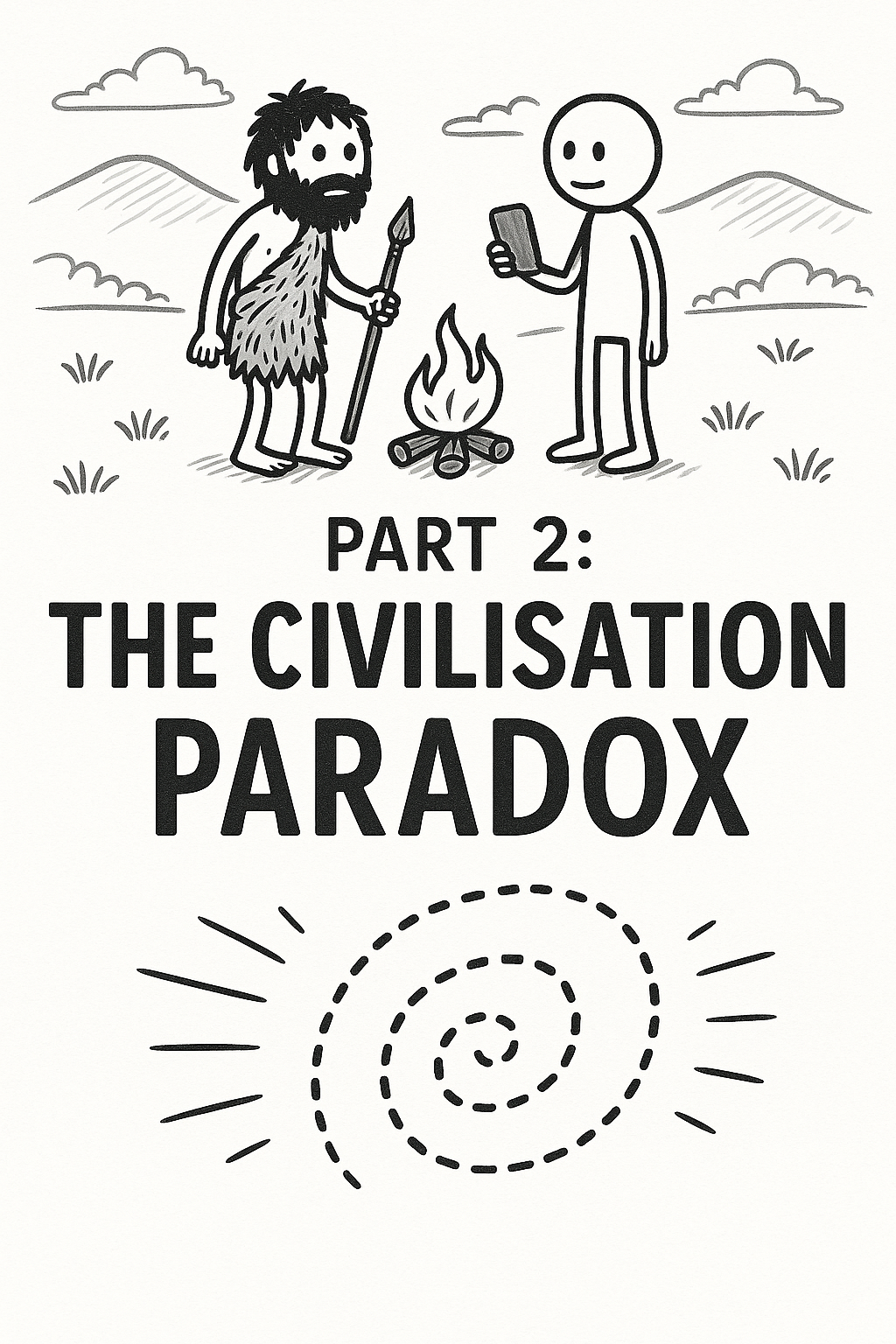
Let’s talk about the strangest contradiction in all of human history.
We — modern humans, Homo sapiens, emotion-havers, tool-users, inventors of both the space shuttle and Instagram filters — have existed for at least 300,000 years.
That’s a long time.
A mind-melting, twelve thousand generations kind of time.
Now here’s the twist:
Our official story of “civilisation” — the part with writing, buildings, bad governments, and spreadsheets — only kicks in about 6,000 years ago.
That’s the last 2% of our existence.
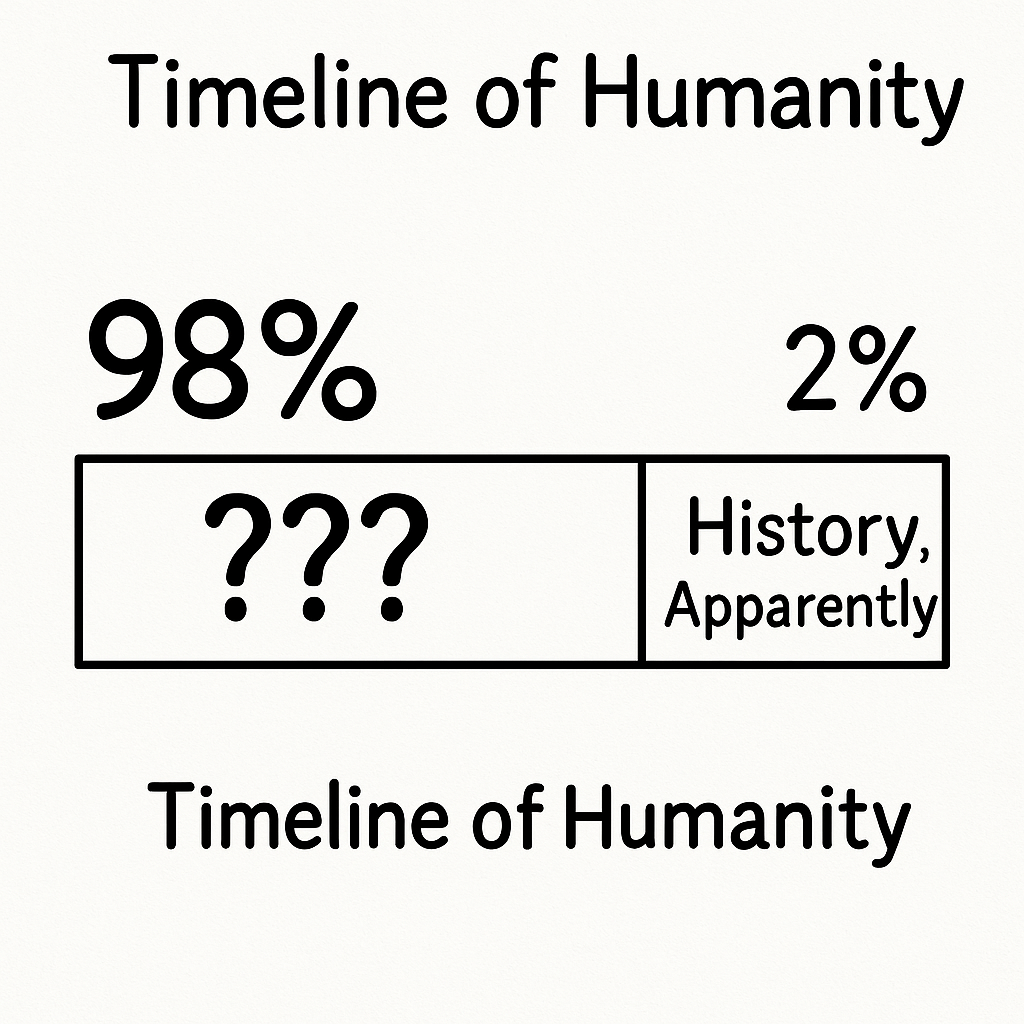
So what were we doing for the other 294,000 years?
Option 1: Absolutely nothing
Just hanging out.
Hunting a bit.
Making flutes out of bird bones.
Staring into fires and quietly inventing awkwardness.
Apparently, we just… weren’t in the mood for infrastructure?
This would be like giving a 15-year-old a laptop and checking back in three years later only to find they used it exclusively to draw dogs in Paint.
Suspicious.
Option 2: They did something — but we lost the save file
Let’s imagine for a second that people weren’t just bored for 294 millennia.
Maybe they built things.
Maybe they had systems. Languages. Culture.
Maybe they did complex math. Maybe they invented excellent sandals.
But then… something happened.
A global catastrophe. A slow collapse. An extinction-level group project that didn’t pan out.
And because most of what people make is not made of stone, everything vanished.
All that’s left? A few undeciphered relics and the occasional “this doesn’t belong here” rock.
Here’s the real philosophical trap:
Absence of evidence is not evidence of absence.
But our entire historical narrative is built on what didn’t rot.
- If it’s made of stone: ancient and important.
- If it’s made of wood or cloth or flesh: too bad, never happened.
- If it’s under the ocean: we don’t talk about that.
This is like watching the last 30 seconds of a movie and pretending you understand the plot.
And yet, we treat 6,000-year-old Mesopotamia like it was The Beginning.
The way we talk about ancient Sumerians is like,
“They were the first smart people. Before them, everyone was just kinda… weird and naked.”
Which is an enormous assumption to make about 12,000 generations of humans.
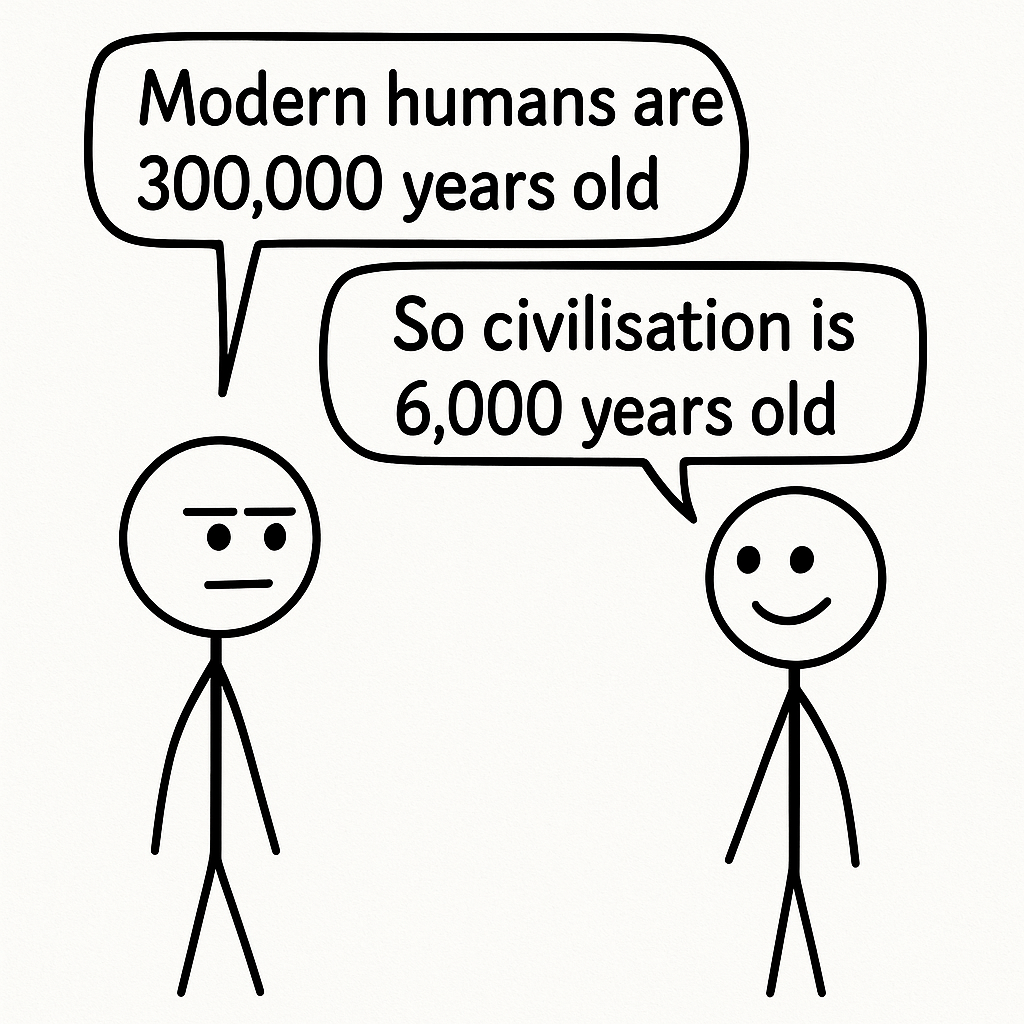
Here’s the bottom line:
Civilisation didn’t come out of nowhere.
You don’t go from grunting in caves to pyramid engineering in one generation.
That’s not how learning curves work.
Which means — either there’s a giant prequel we’re missing,
or we’re being taught season six as if it’s season one.
And the real story?
It might be buried. Or drowned. Or written in symbols we threw in a museum and ignored.
This is the Civilisation Paradox:
We’ve been here for hundreds of thousands of years.
And yet we act like we only started thinking recently.
Part 3: The Three Big Possibilities
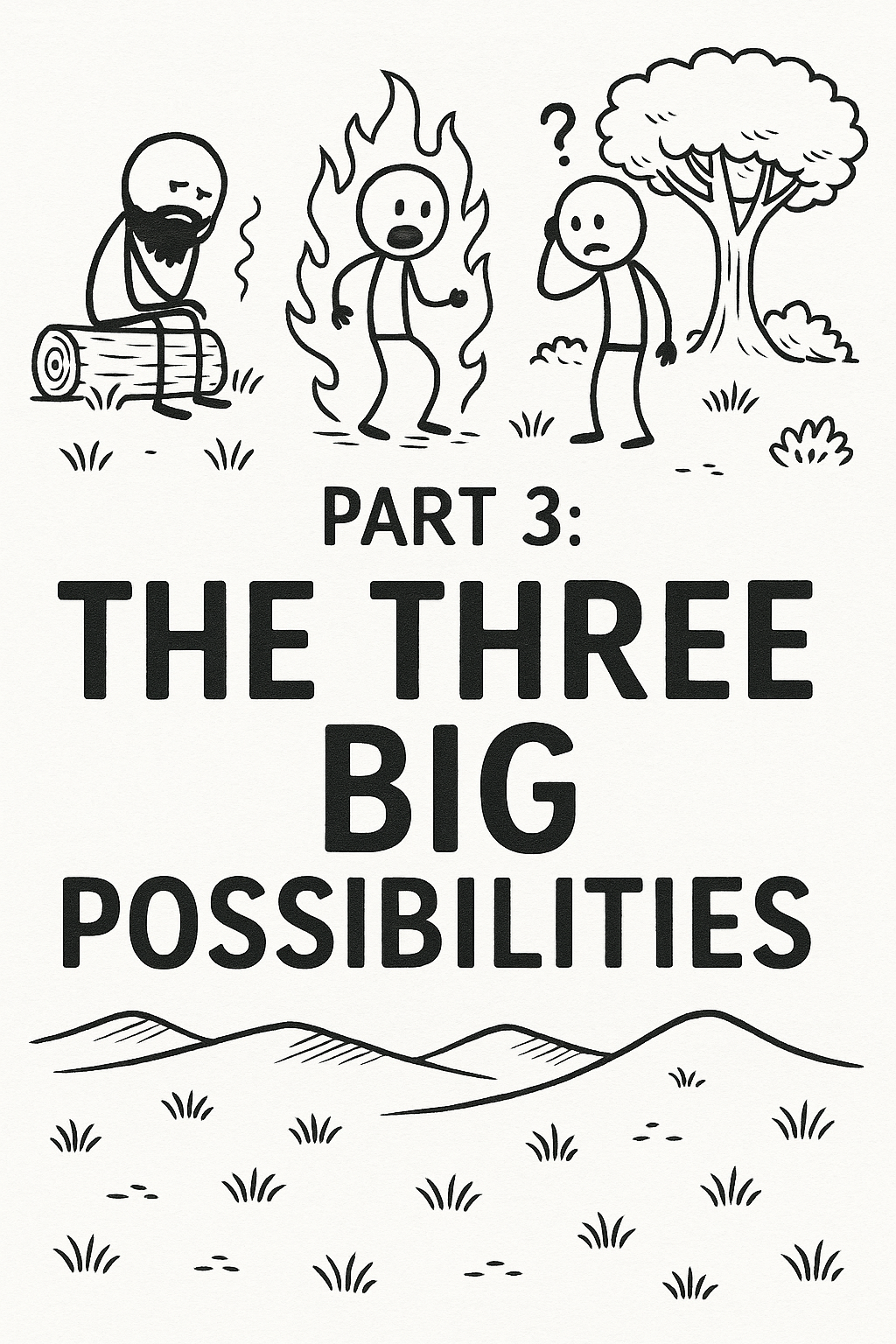
Okay. So the Sahara used to be green.
We’ve been around 300,000 years.
And the whole “civilisation” thing only shows up for the last 6,000.
So where’s the rest of the story?
There are only three real options. And none of them are relaxing.
Possibility A: We Did Nothing for 294,000 Years
This is the mainstream view.
It says: humans were just slow.
Really slow.
Like “I’ll get to it eventually” but for three Ice Ages.
According to this view, we spent most of our species' history:
- Chiseling rocks into other rocks
- Failing at farming
- Making cave art
- Telling each other to stop chewing so loud
Then suddenly:
One day someone invents irrigation and boom — history begins.
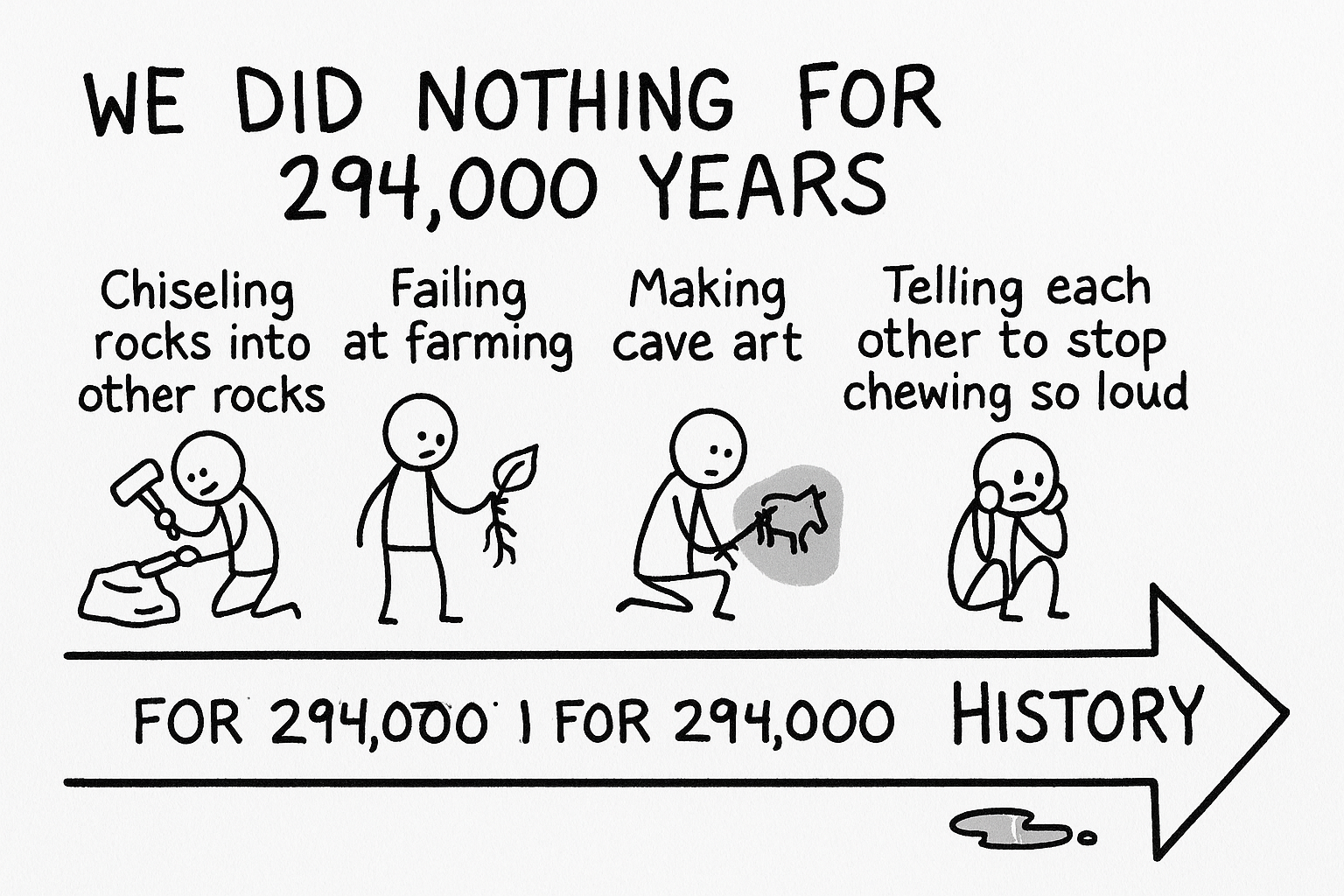
Now… could this be true?
Yes.
But it’s like assuming a guy lived in the same flat for 50 years and only cleaned the last room — so we assume he just sat in a pile of beans the whole time.
Possibility B: They Existed, But Got Wiped Out
Here’s where things get spicy.
What if a whole civilisation — or civilisations — rose up…
and then got Thanos-snapped out of existence?
- Massive flood?
- Global firestorm?
- Volcanic tantrum?
- Planetary cold shoulder?
- Or (my favourite) — they built something so clever it destroyed them?
This is “Atlantis but not a joke” territory.
Maybe they figured out flight. Or energy. Or artificial intelligence made from tree sap.
And then something went sideways. Very sideways.
No survivors. No backups.
Just a bunch of buried myths and a suspicious amount of underwater stone.
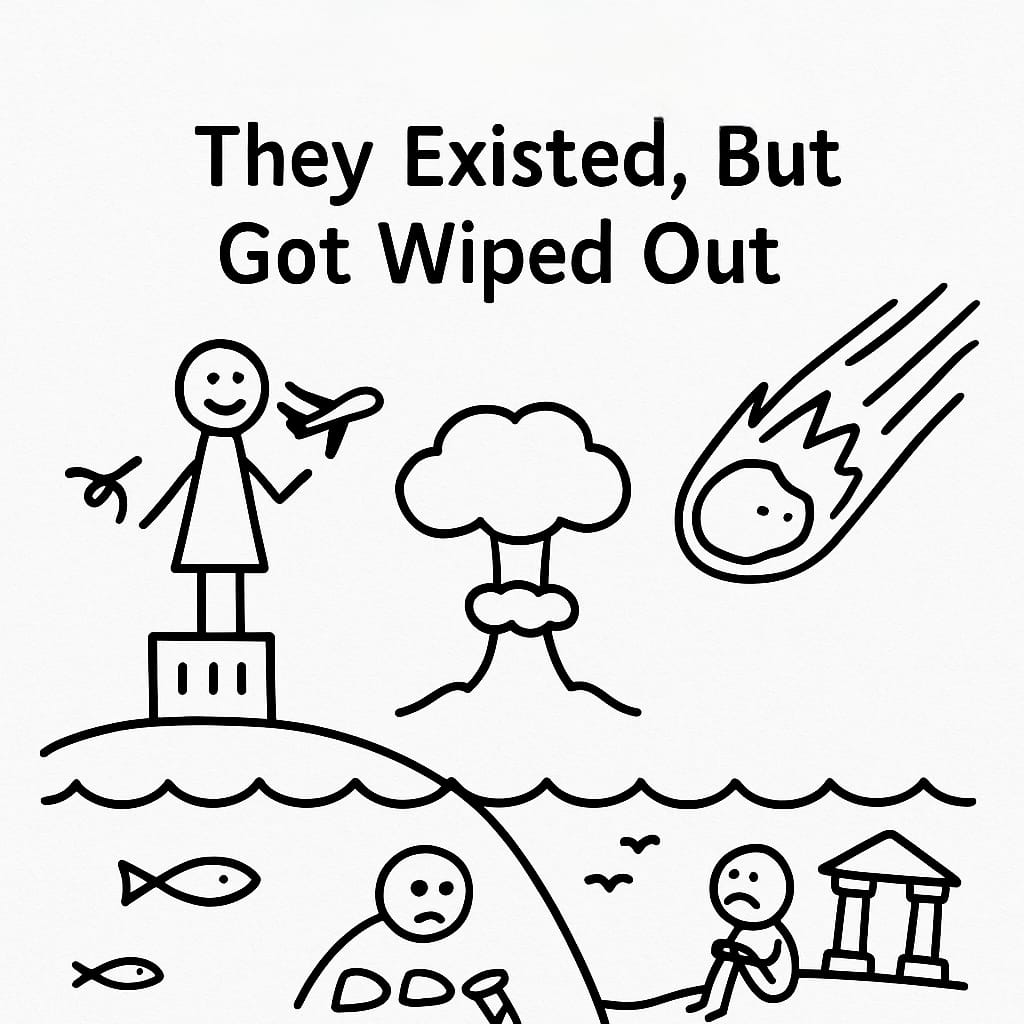
This would explain why every culture on Earth has the same ancient trauma story:
- Golden age
- Pride
- Cataclysm
- Rebirth
It’s the original reboot cycle.
Possibility C: We Forgot
Now we’re into psychological horror.
What if they didn’t get wiped out immediately?
What if it was slow?
A slow crumble.
A knowledge leak.
A rolling blackout of memory.
The cities empty. The scripts fade. The structures crumble.
People move inland. They tell stories.
Over generations, the science becomes myth.
The technology becomes magic.
And the ancestors become gods.
Eventually, their great-great-grandkids invent writing.
And when they do, they write about giants and floods and sky chariots — not realising they’re describing their own past.
We don’t remember them.
Because they didn’t remember themselves.
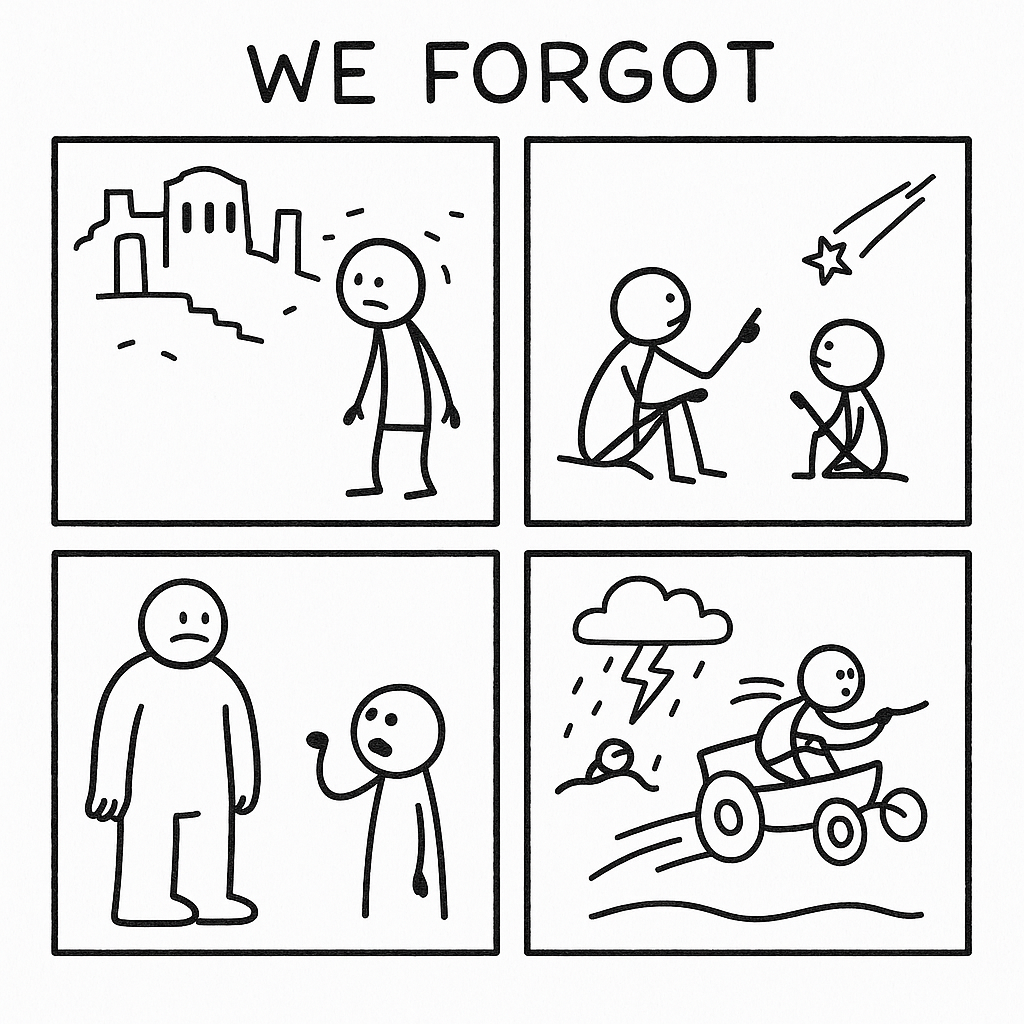
So which is it?
A. We were boring.
B. They were doomed.
C. We’re amnesiacs walking on the ashes of our own family tree.
Honestly, maybe all three.
But we won’t know until we start asking better questions.
Or until someone finds a fossilised USB stick in the Indian Ocean.
Part 4: Evidence That’s Not Really Evidence (But Still Weird)
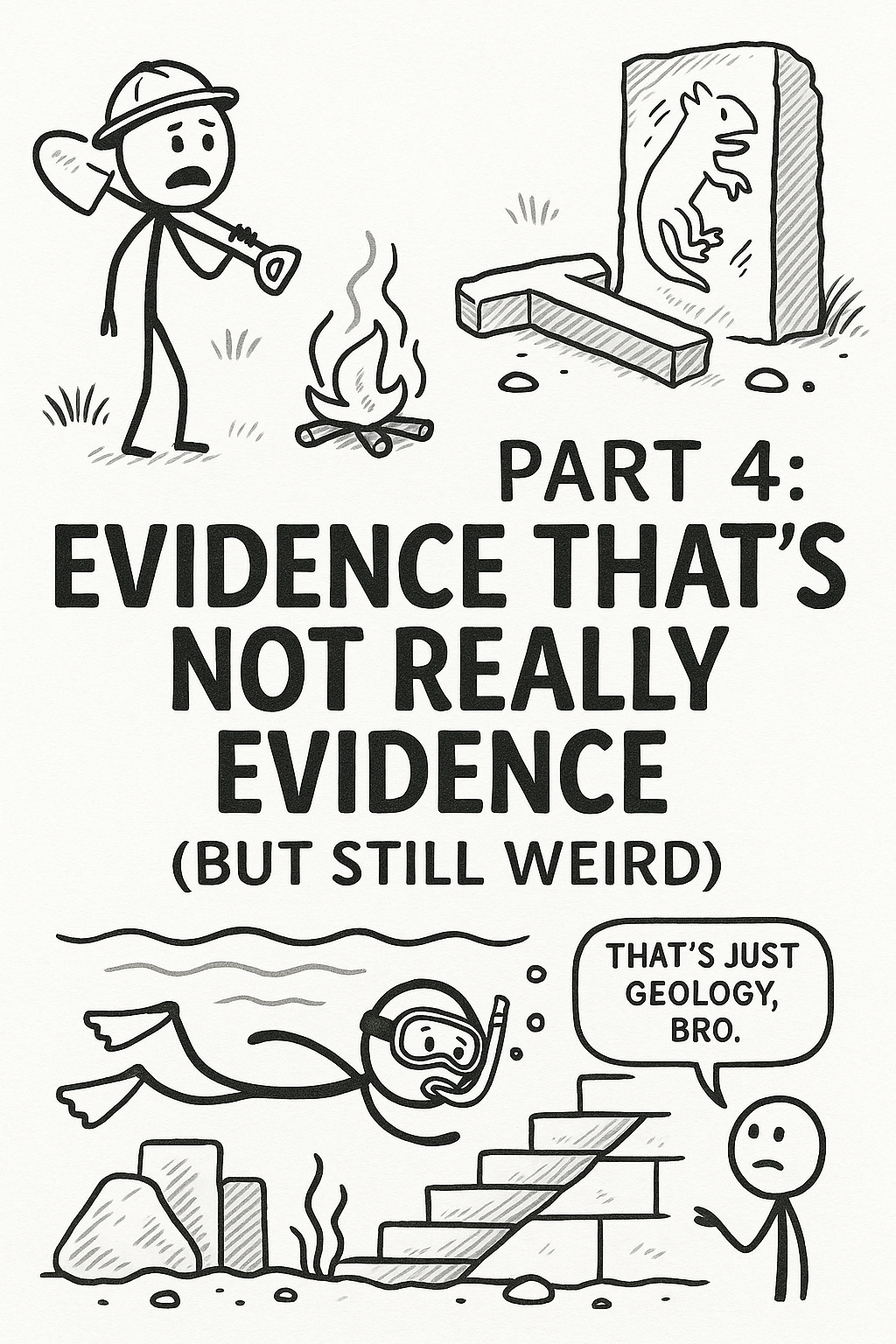
Let’s say, just for fun, that you’re a rational human being with internet access and a growing suspicion that something doesn’t add up.
You don’t want to be that guy — the one yelling “THEY’RE HIDING THE TRUTH!” on Facebook with a picture of a lizard in a suit.
But… you’re also kind of wondering if we missed something.
Like a whole chapter. Or a whole book.
Because when you start looking, the world is full of stuff that doesn’t fit the timeline.
And if this were a murder mystery, these would be the clues taped on the wall with red string and high-stakes coffee breath.
1. Göbekli Tepe — aka “The Ruin That Shouldn’t Exist”
Found in Turkey.
Discovered in the 1990s.
Dated to 12,000 years ago.
Let me repeat that.
Twelve. Thousand. Years.
That’s 7,000 years older than the pyramids.
It’s older than farming.
It’s older than pottery.
And somehow, it’s a gigantic megalithic site — with 20-ton stone pillars, precise carvings, and alignment to the stars.
Built, supposedly, by people who hadn’t even invented the bowl yet.
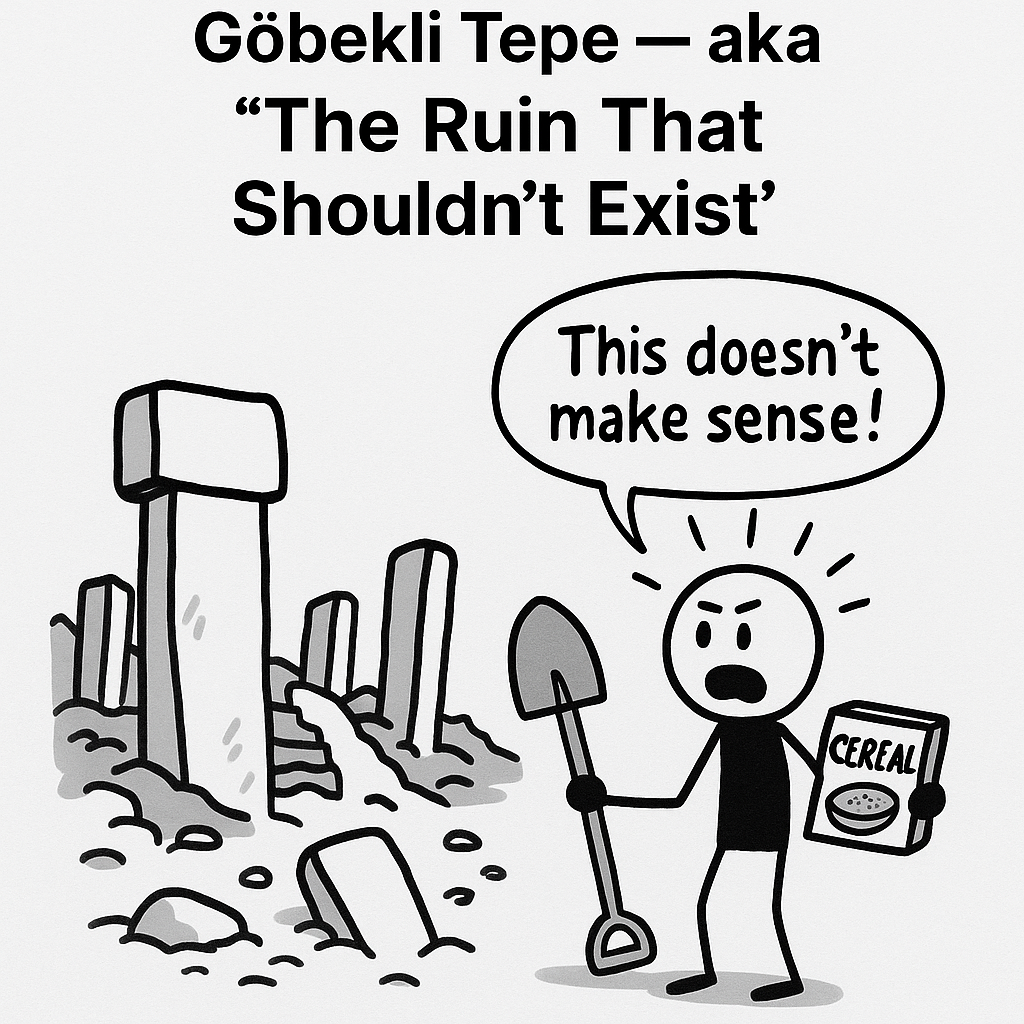
Oh — and they buried it on purpose.
As in: they built it, used it for a thousand years, and then covered it with dirt.
Like, "Welp, better hide the advanced stuff before the history books get written."
1.5. The Pyramids — Our Most Famous Historical WTF
Let’s take a break from Göbekli Tepe and talk about something more familiar:
The Great Pyramid of Giza.
We all kind of accept it as “impressive.”
But most of us — and I say this respectfully — haven’t actually thought about it for more than six seconds.
So let’s do that.
First, the basics.
The pyramid is:
- 146.6 metres tall (originally — erosion shaved some off)
- Weighs ~6 million tons
- Made from 2.3 million limestone and granite blocks
- Each block weighs between 2 and 30 tons
- Some internal granite slabs weigh up to 80 tons
Let me repeat that.
80 tons.
That’s a full-grown blue whale.
But square. And indoors. And lifted 150 feet in the air before the Iron Age.
The stone used:
- Came from local quarries for limestone
- But the granite? That came from Aswan, over 800km away
How’d they transport 80-ton granite slabs 800km?
- No wheels
- No pulleys
- No cranes
- No draft animals
- No iron tools
Their best option was:
“Put it on a boat. Drag it across land. Hope.”
You try that.
Try moving a blue whale over 500 miles using wet sand and ambition.
The precision is worse.
The base is a perfect square:
Each side is 230.4 metres long
And they’re off by only 58 millimetres. Total.
The entire pyramid is aligned to true north
Within 3/60th of a degree.
That's better than most modern compasses.
It’s also earthquake-resistant.
Still standing after 4,500 years.
No rebar. No concrete. Just stones stacked with sub-millimetre accuracy.
Inside, there are air shafts aligned to specific stars.
The King’s Chamber is a perfect cube.
And the pressure-relieving structure above it — the five granite slabs weighing 400 tons total — are arranged in a way that even modern engineers would consider “a bit much.”
They built all of this without:
- Blueprints
- Google Earth
- The metric system
- Ladders that didn’t suck
Just… measuring rods.
And brains.
And whatever the ancient Egyptian version of "project management" was.
So what’s the problem?
The problem is... this doesn’t add up.
We’re told:
“Yeah, they used copper chisels and rope and just sort of... did it.”
But have you ever tried chiseling granite with copper?
It doesn’t work.
Copper is soft. Granite is not.
It’s like trying to drill through a car with a spoon.
And yet somehow, they carved 80-ton blocks of it.
Precisely.
In the dark.
In shafts too narrow for humans to stand up in.
So what does this mean?
It means either:
- The Egyptians had engineering capabilities far beyond what we give them credit for
- Or we’re missing something huge about how this was done
- Or the whole story of when and how and who is... off
And here’s the kicker:
This isn’t even the oldest site we know of.
It’s just the one we can’t stop staring at.
Because it’s right there.
Big. Improbable.
Mocking us with geometry and silence.
So we fill in the blanks.
We say:
“Well, the Egyptians were brilliant. And very motivated.”
Maybe they were.
Or maybe… they were remembering something.
Building from something.
Echoing something that came before.
And the real mystery isn’t the pyramid…
It’s the idea that we’re still calling this the beginning.
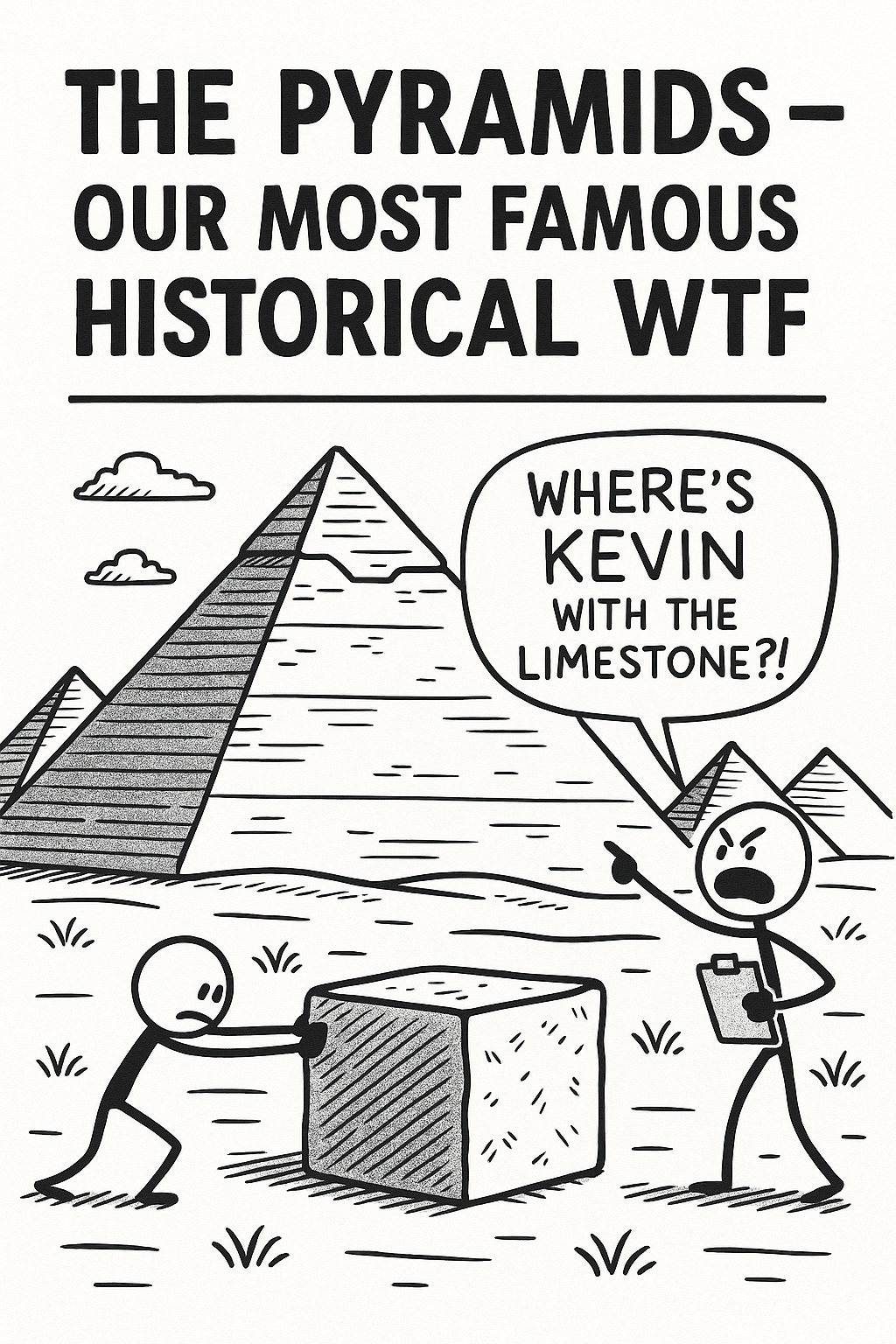
2. Underwater Megastructures
Okay. Imagine you’re scuba diving and you find a massive stone structure with steps, platforms, and right angles.
What do you call it?
A.) “An ancient city.”
B.) “An underwater archaeological site.”
C.) “Definitely just a weird rock. Let’s go to lunch.”
Modern academia tends to choose C.
But places like:
- Yonaguni (Japan)
- Dwarka (India)
- Bimini Road (Bahamas)
…all feature stone shapes and patterns that look like architecture.
Except they’re underwater. And we can’t carbon date stone.
So we call them “controversial” and move on.
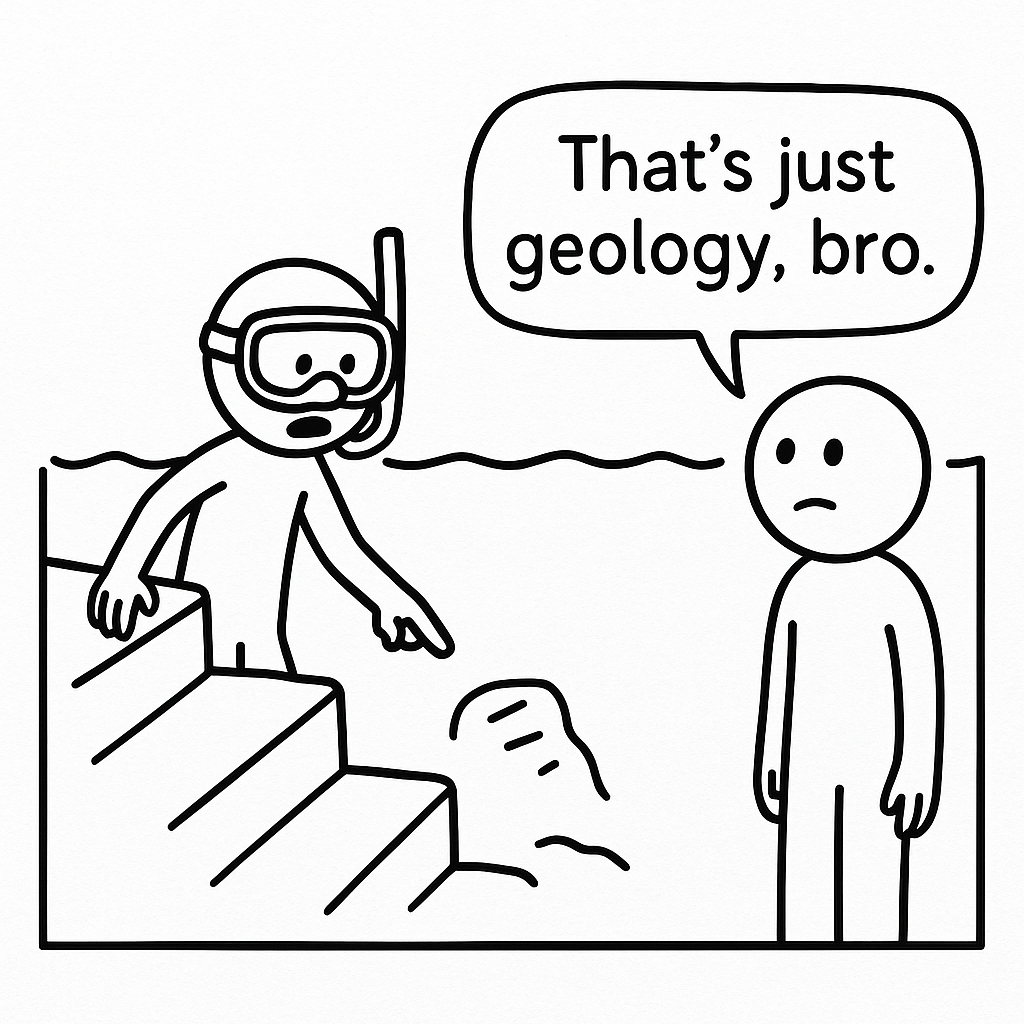
Now remember: during the Ice Age, sea levels were 120 meters lower.
That means millions of square kilometers of coastal land are now submerged.
So if you were going to build a port city back then — which you would —
it’s probably now a coral reef.
Or, as I like to call it:
Atlantis.
3. The Great Flood Memory
Here’s the one that really breaks the simulation:
Every single culture on Earth has a flood myth.
From the Mesopotamians to the Mayans to the Maori.
The Bible. The Vedas. Aboriginal oral histories. Norse epics. Aztec texts.
All of them say the same thing:
“There was a great civilisation. Something went wrong.
The world flooded. Only a few people survived.”
Coincidence?
Archetypal fear?
Collective trauma?
Maybe.
Or maybe they’re all describing the same real event.
A memory passed down, whispered over campfires, distorted by time,
and turned into religion.
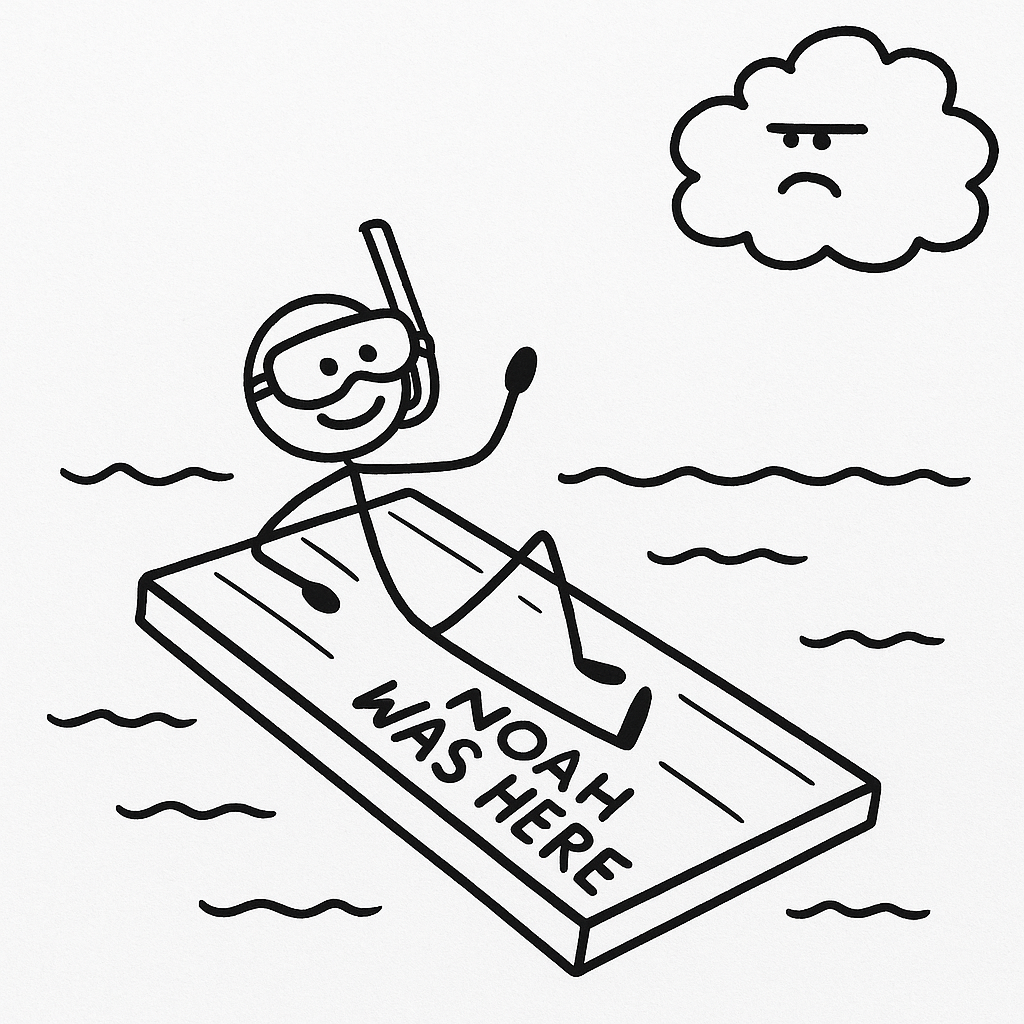
So what do we do with all this?
Nothing, apparently.
We build shopping malls near the sites.
We dismiss the anomalies.
We write papers that say “interesting, but unprovable.”
Meanwhile, some 12,000-year-old monument is quietly screaming “ASK BETTER QUESTIONS.”
And the sand just keeps piling up.
Part 5: The Theory
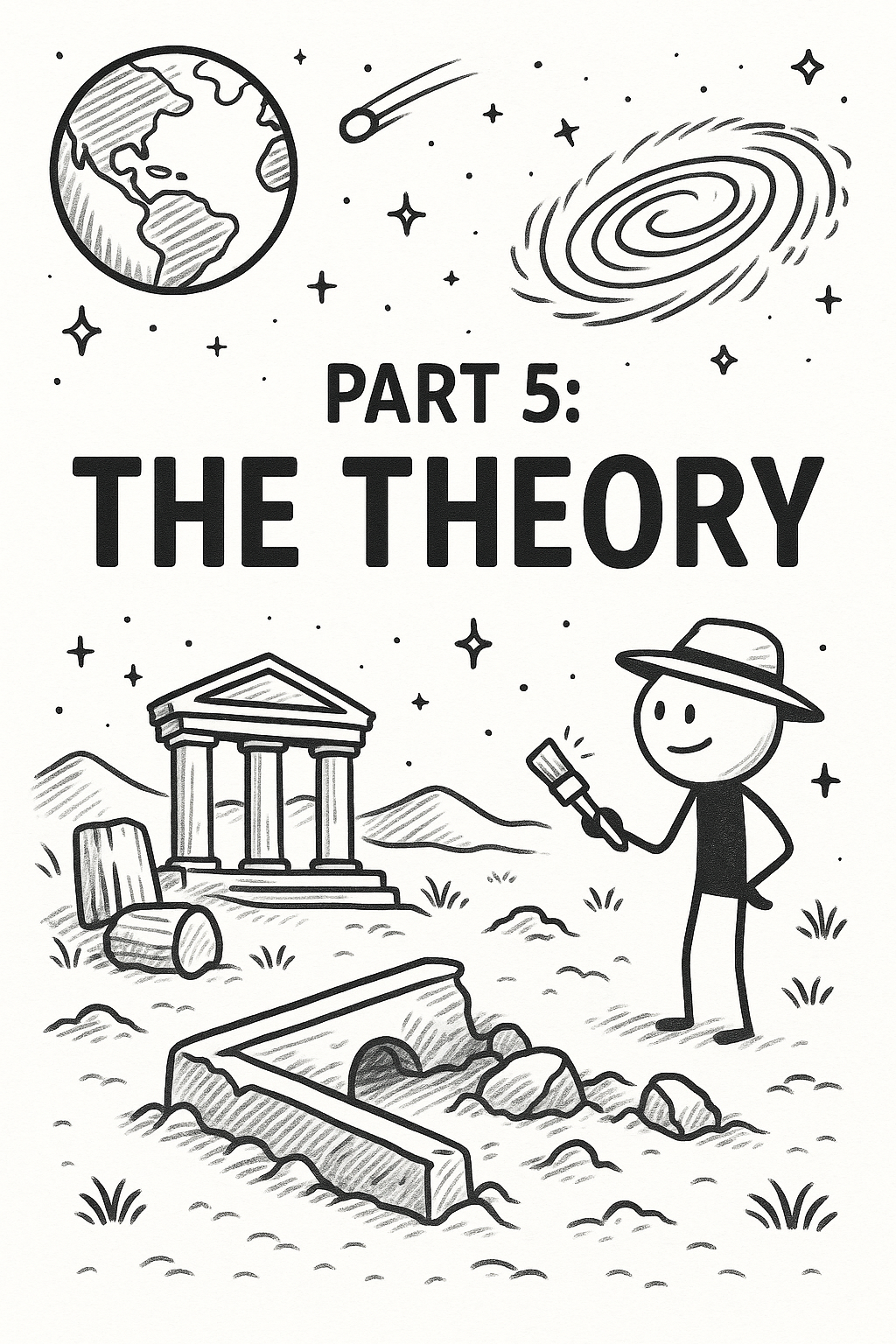
So. Let’s put the pieces on the table.
- Humans have existed for 300,000 years.
- Civilisation only shows up for the last 6,000.
- The Sahara was green.
- Ancient underwater cities exist.
- Everyone remembers a flood.
- Göbekli Tepe broke history.
What if — and hear me out — civilisation isn’t a staircase?
What if it’s a washing machine?
The Civilisation Cycle (™)
Here’s the model.
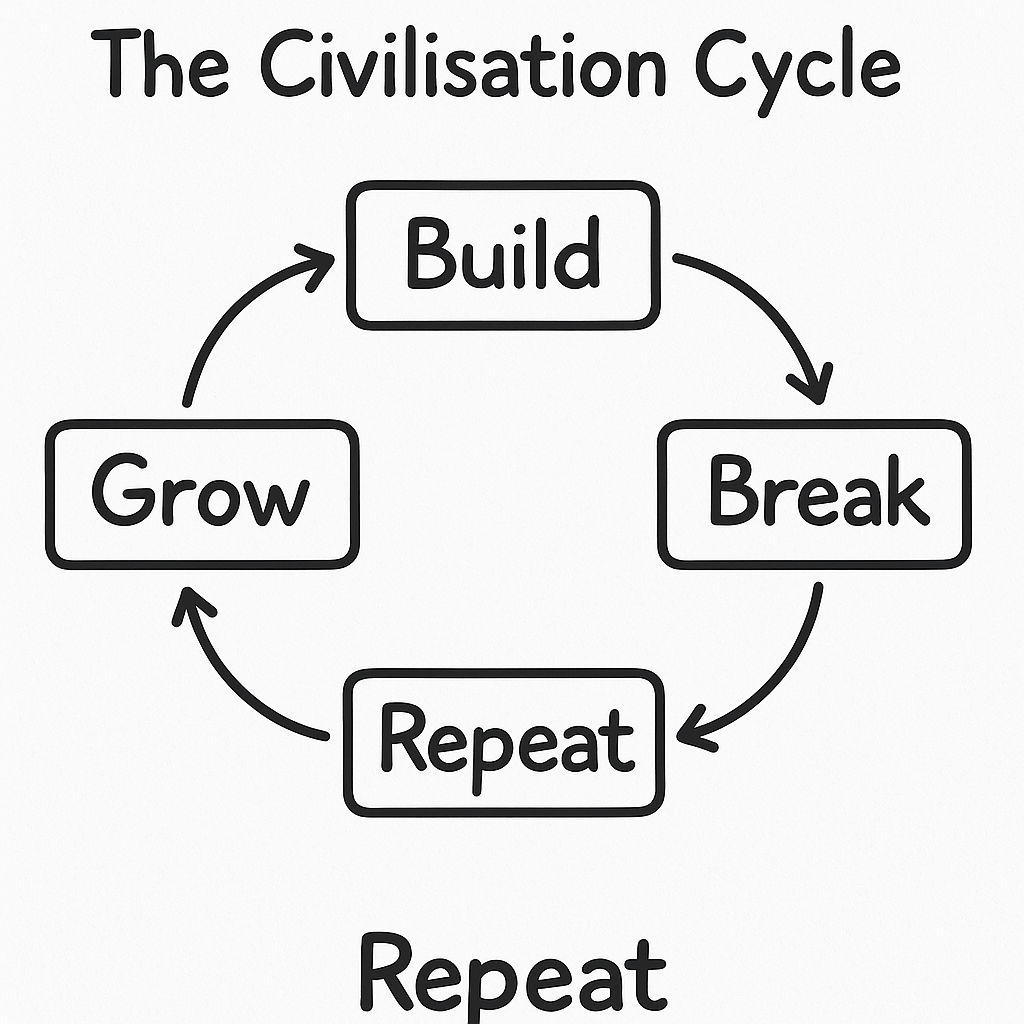
It works like this:
- Build — We figure stuff out. We plant things. We make tools. We invent bureaucracy.
- Grow — Populations rise. Cities form. Ideas spread. Stuff gets built that nobody will clean properly.
- Break — Something goes wrong. Big wrong. Comet? Plague? Hubris? Yes.
- Forget — We try to survive. We lose details. Stories replace blueprints. Gods replace grandparents.
- Repeat — A few thousand years later, a kid discovers maths again.
Civilisation isn’t linear.
It’s cyclical.
And each cycle ends with selective memory loss.
The Memory Reset Problem
Most of what we create is fragile.
- Books rot.
- Wood burns.
- Metal rusts.
- Cloud storage isn’t that cloudy.
Unless it’s carved into stone or accidentally preserved in a bog, it disappears.
So if a civilisation builds incredible tech — but fails to last long enough for someone to put it in a museum — we just don’t know it happened.
We get the flood stories.
The myths.
The leftover pieces with no manual.
And then we assume we’re the first smart ones.
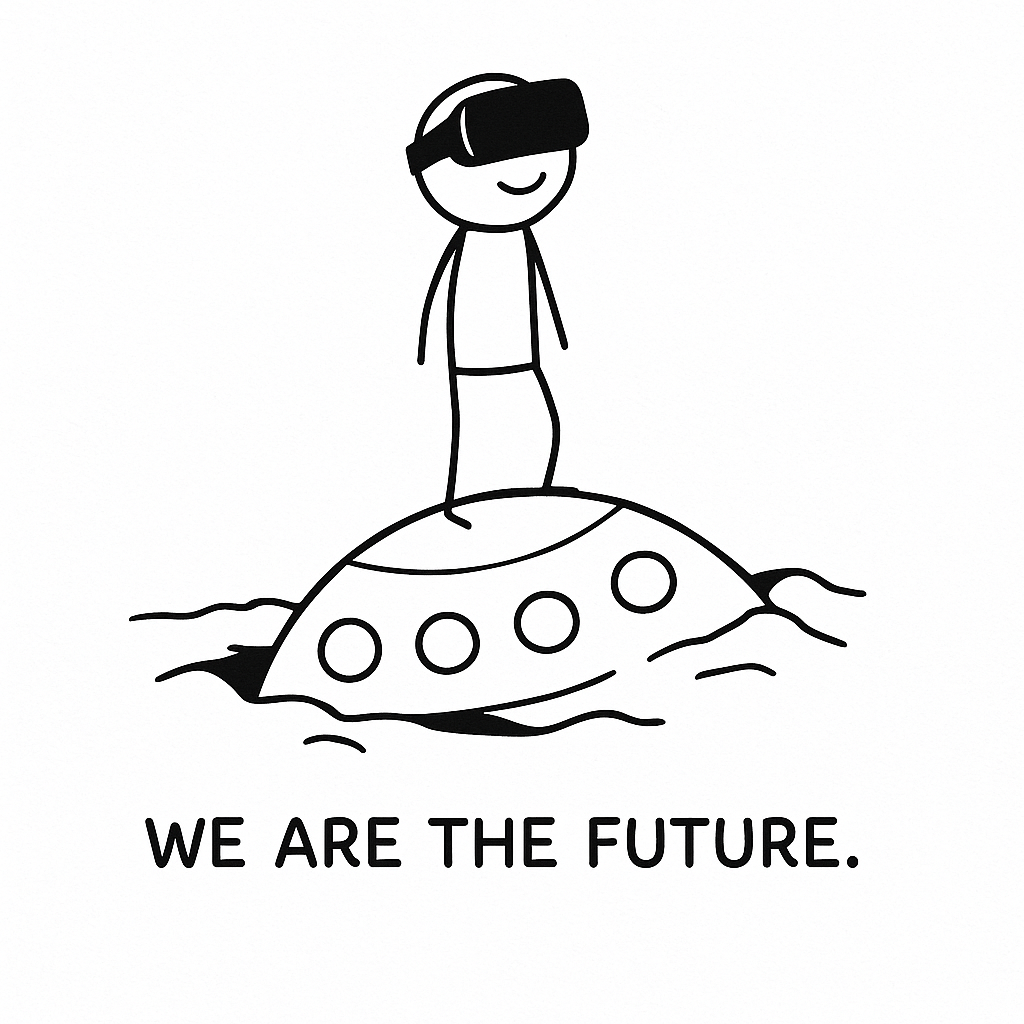
A Thought Experiment
Imagine this.
Tomorrow, everything ends.
Meteor. Grid failure. Planet-wide wifi burnout.
A few thousand people survive.
Now fast-forward 10,000 years.
New languages. New borders. New myths.
Someone finds the ruins of a data center.
No power. No access. Just smooth black bricks with no buttons.
What do they call it?
- Temple?
- Shrine?
- Weird stone from the sky?
Because without the context, everything we made becomes confusing and mystical.
We could literally become our own myth.
Maybe We Already Did
Maybe we’re the sequel.
The version built on top of the forgotten.
- Atlantis wasn’t a place. It was a previous chapter.
- The gods weren’t supernatural. They were just… advanced.
- And the “firsts” weren’t first — they were just the survivors.
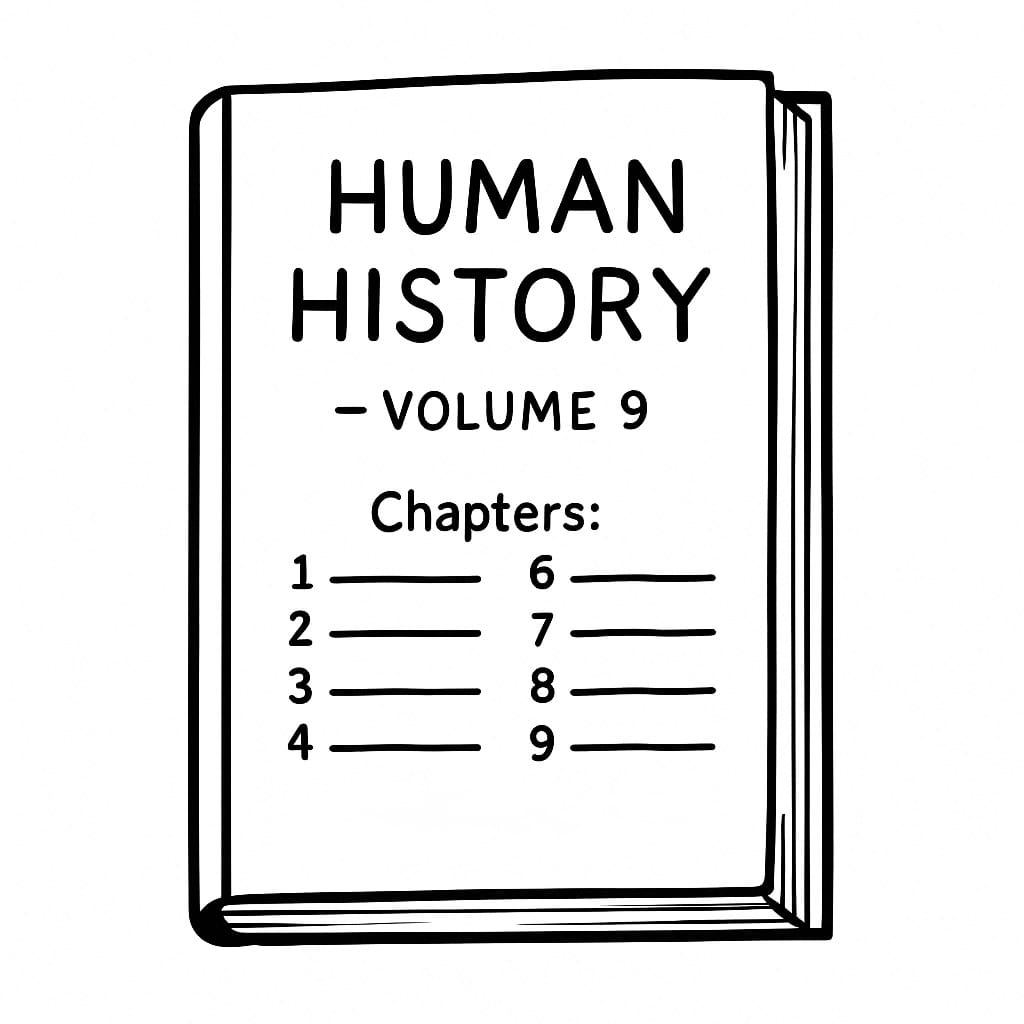
If this theory is even partly true:
- We’re not the first.
- We’re not the smartest.
- We’re just the least forgotten.
And maybe the biggest thing we inherited… was the amnesia itself.
Part 6: The Consequences
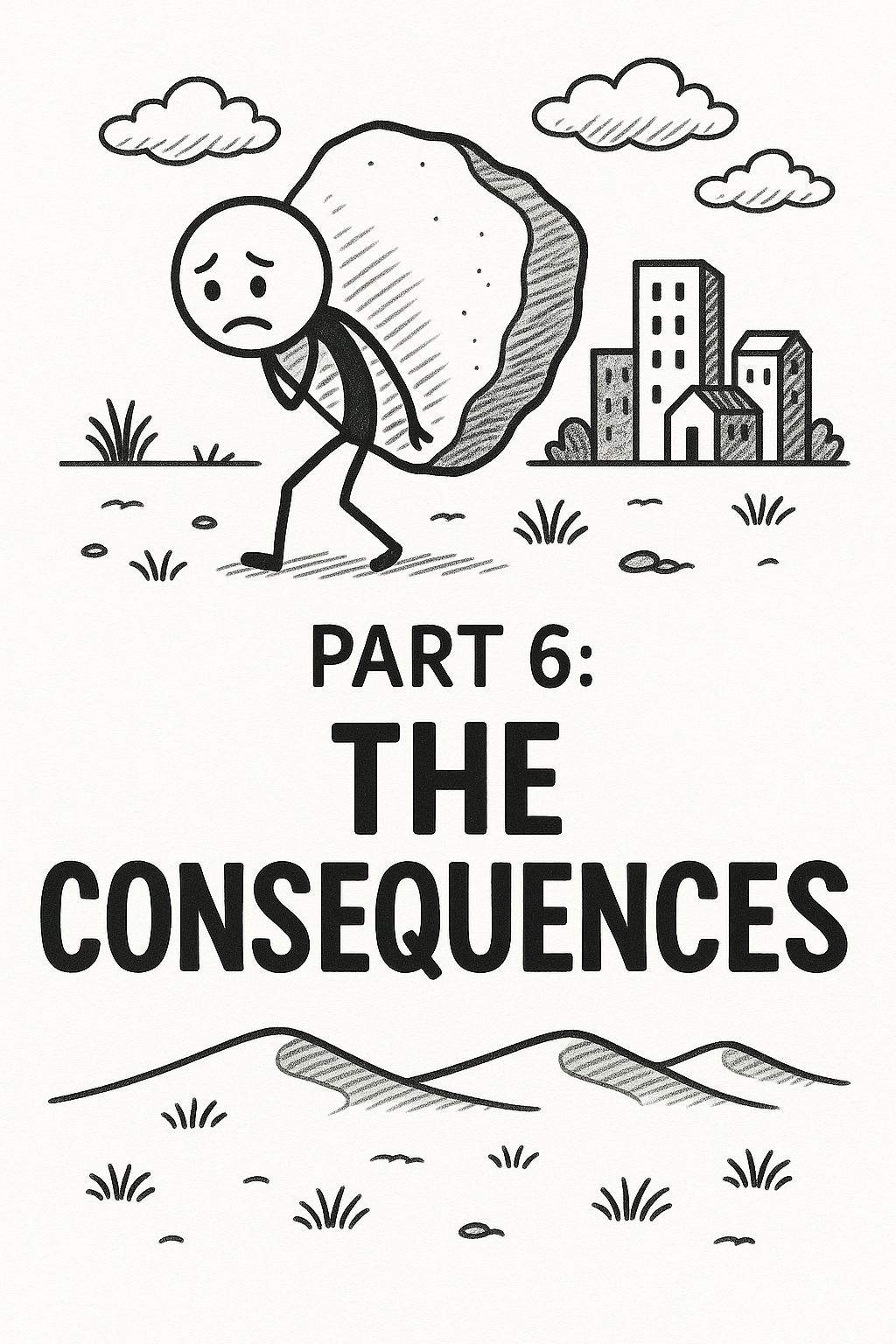
Okay. Let’s say the theory is true — or even just... close.
Let’s say we’re not the first advanced civilisation.
Let’s say someone came before us. Maybe lots of someones.
And they got wiped. Forgotten. Filed under “myth” by accident.
What does that do to your brain?
Because for me, it’s somewhere between:
- “Wow, what a humbling cosmic perspective,”
and - “Oh no, we’re going to do it again, aren’t we?”
Consequence #1: We’re Standing on Bones
Not literal bones, hopefully.
But metaphorical ones. Civilisational ones.
Every skyscraper might be sitting on the last attempt.
Every city might be the reboot of a reboot.
What we call “progress” might just be...
remembering the bits that survived the sand.
We are not walking toward a future.
We might be climbing out of a hole we fell into before.
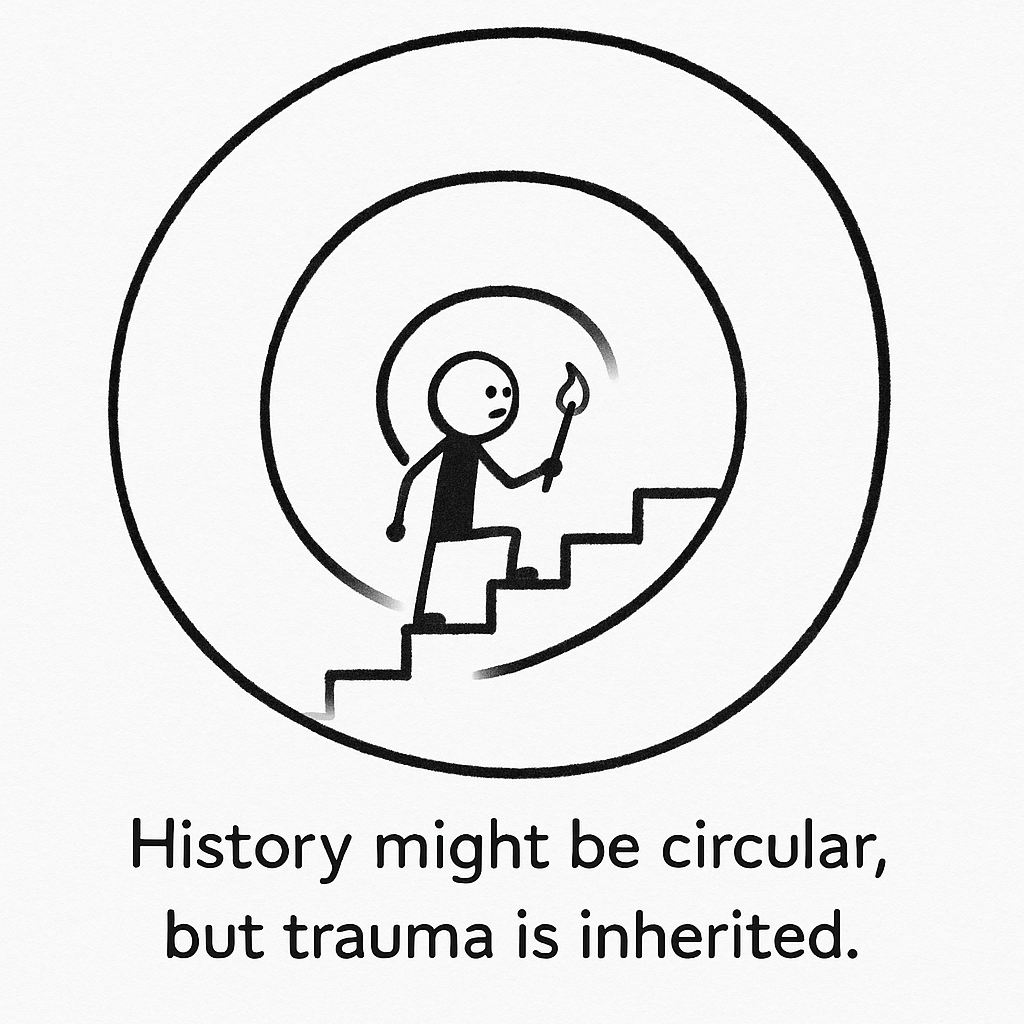
Consequence #2: We’re Still Forgetting
If forgetting is part of the cycle, we’re already doing it again.
- Digital photos with no backups.
- AI replacing trades before we understand them.
- Climate tipping points we’re tweeting past.
We’re building faster than we’re preserving.
And trusting our future to cloud storage and short-term memory.
So what happens if we’re the myth next time?
What does the next civilisation think we were?
- Wizards?
- Gods?
- Idiots with glass phones?
Because if someone 12,000 years from now finds your laptop…
it’s just a weird rectangle with no story.
Consequence #3: The Real Story Is Missing
The scariest part of this whole theory isn’t Atlantis.
It’s this:
The biggest thing we don’t know...
is that we don’t know it.
There might be entire chapters of humanity we’ve never read.
Philosophies lost. Languages gone.
Solutions to modern problems that are buried under silt and ego.
And maybe — just maybe — we don’t need new inventions.
Maybe we need to remember old ones.
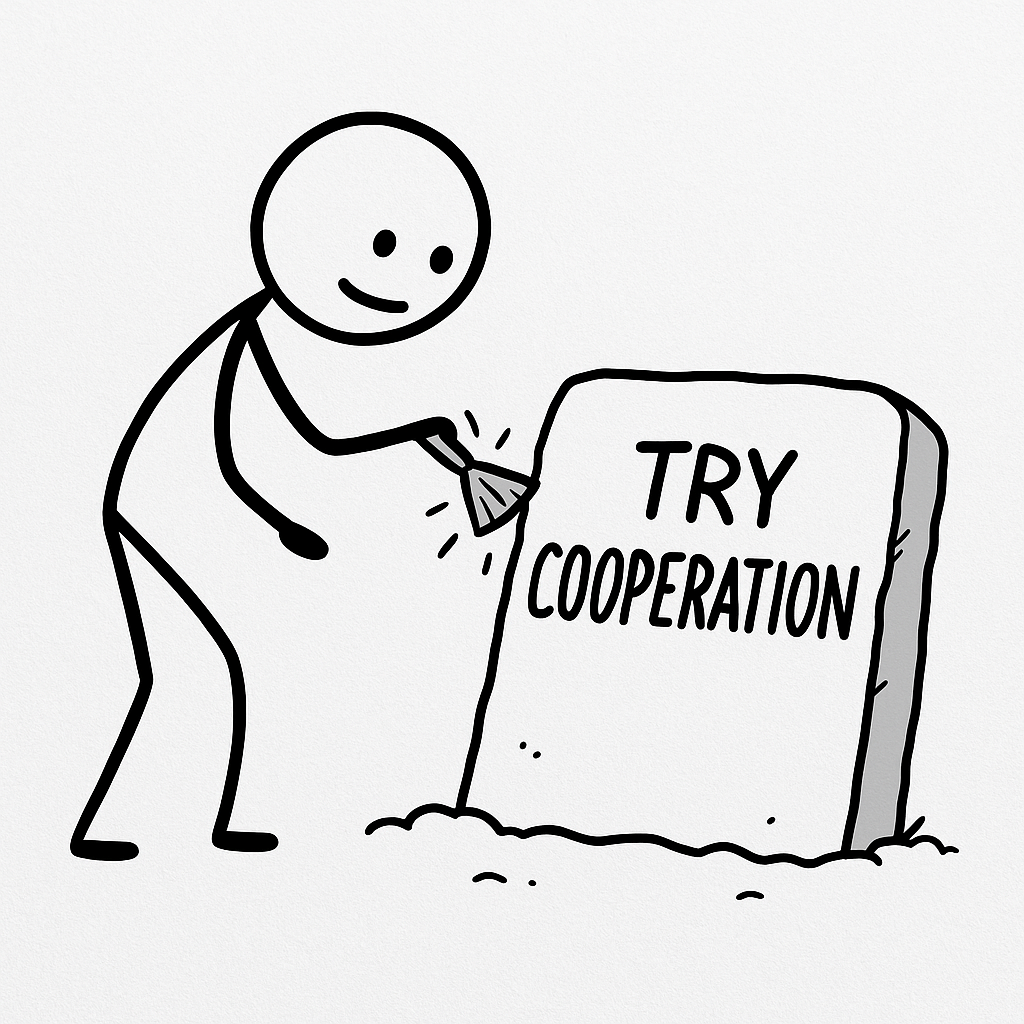
Consequence #4: This Is a Warning
If this has happened before, it will happen again.
Unless we’re different.
Unless we’re smarter, slower, kinder, harder to break.
Unless we write things down that matter.
Not just data — wisdom.
What would you leave behind for the next reboot?
- A USB stick?
- A message?
- A better story?
What would you say if someone like us digs it up in 12,000 years?
Part 7: The Echo
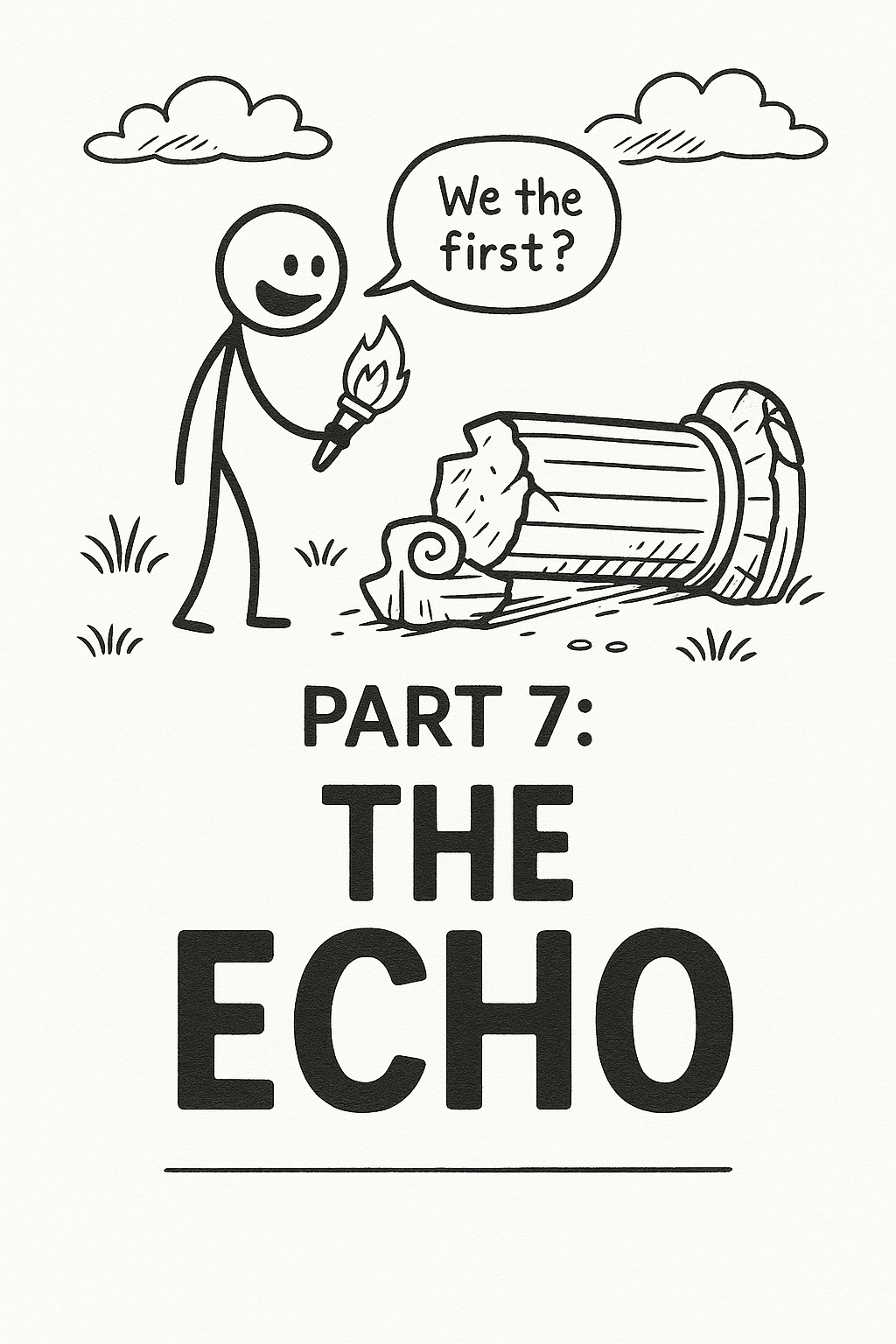
So what if we’re not the first?
What if we’re the echo?
A faint resonance of something that came before —
not as loud, not as clear,
but still here.
A civilisation built on memory loss.
A reboot without the patch notes.
We carry tools we didn’t invent.
Speak in languages built on forgotten alphabets.
Worship stories that might’ve been instructions.
And all the while, we believe we’re the first ones here.
But maybe that’s the most human thing we do:
Start over.
We rise. We reach. We forget.
We find meaning in rubble.
We build with our bare hands and call it progress.
Maybe the point isn’t to be the first.
Or even the best.
Maybe the point is to leave behind something real
for whoever’s next.
A reminder. A story.
A little flag in the sand that says:
“We were here. We tried. We cared.”
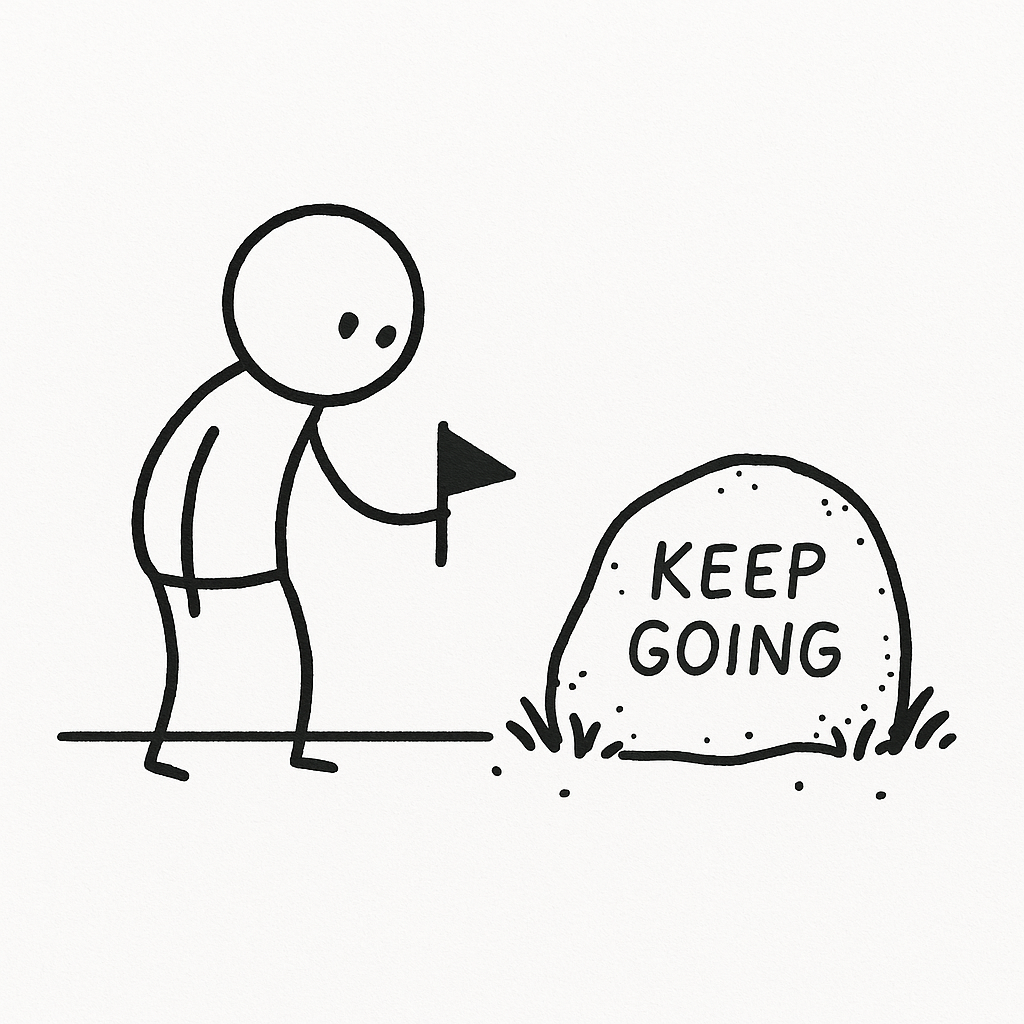
Because maybe — just maybe —
we’re not the peak of history.
We’re its second chance.
And this time,
we write it down.
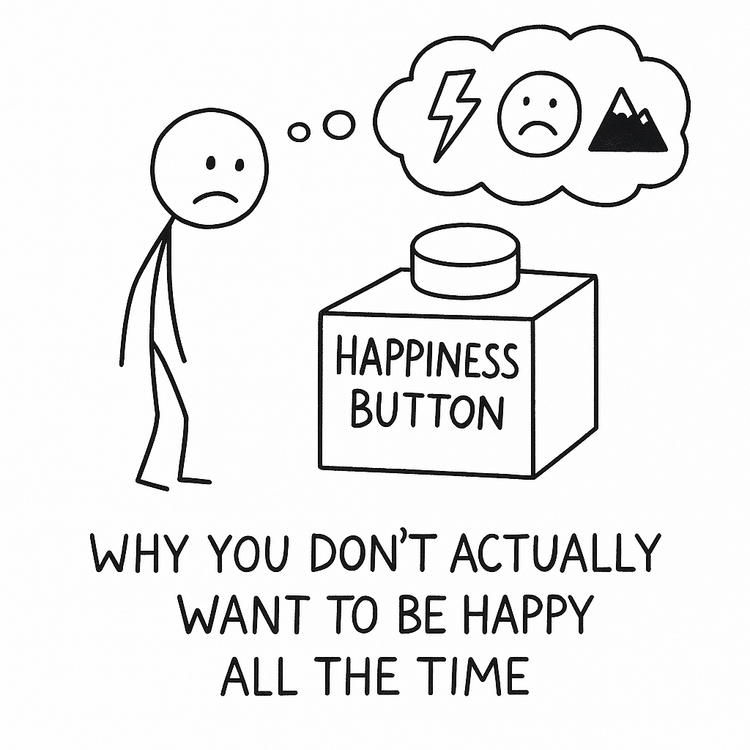

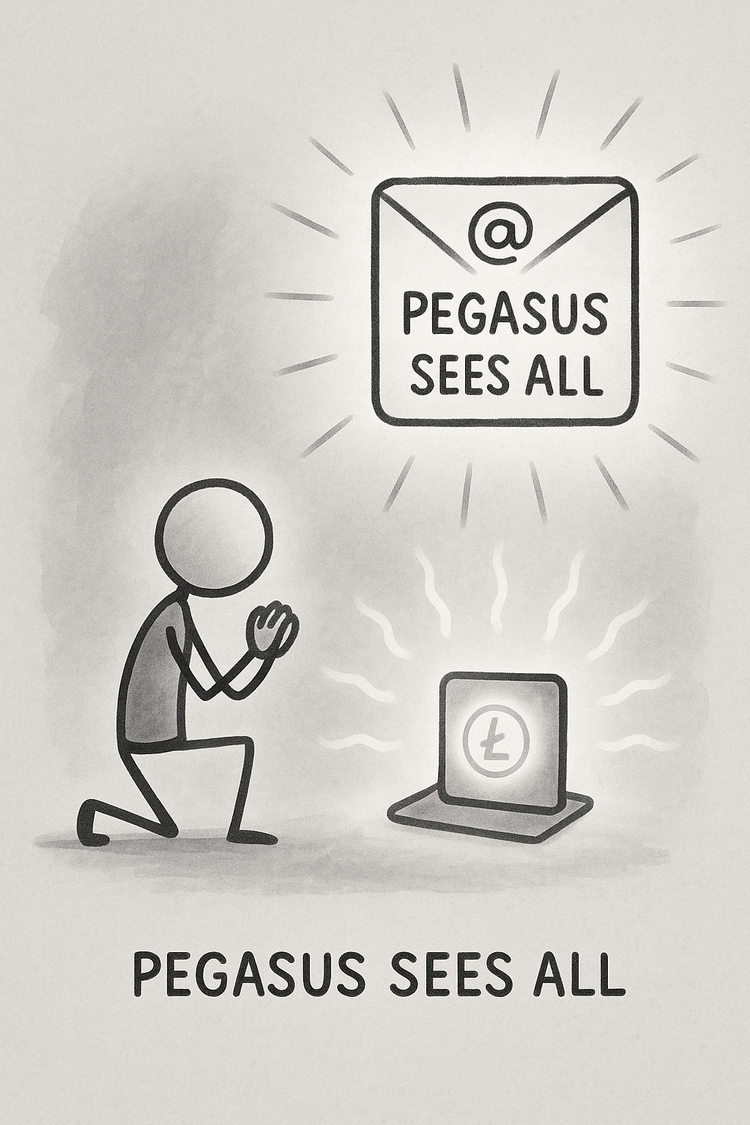
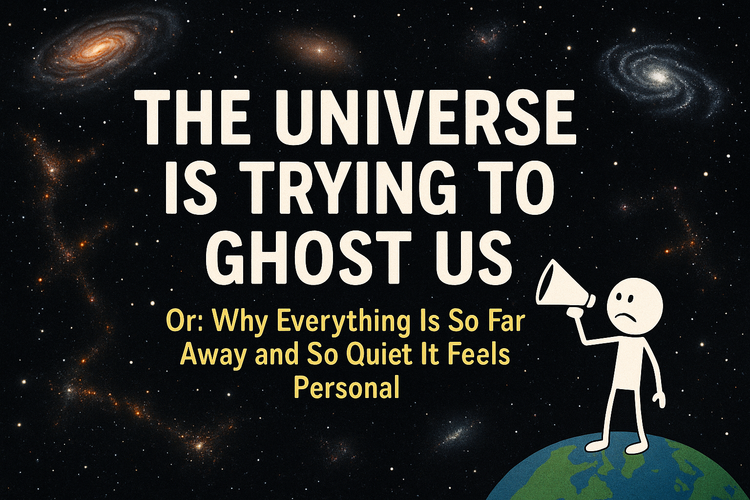
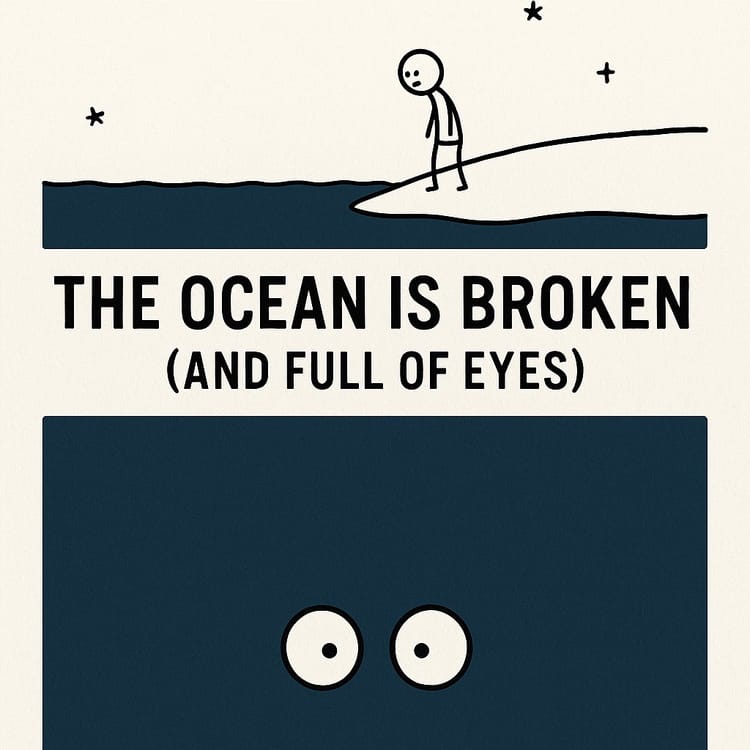
Member discussion